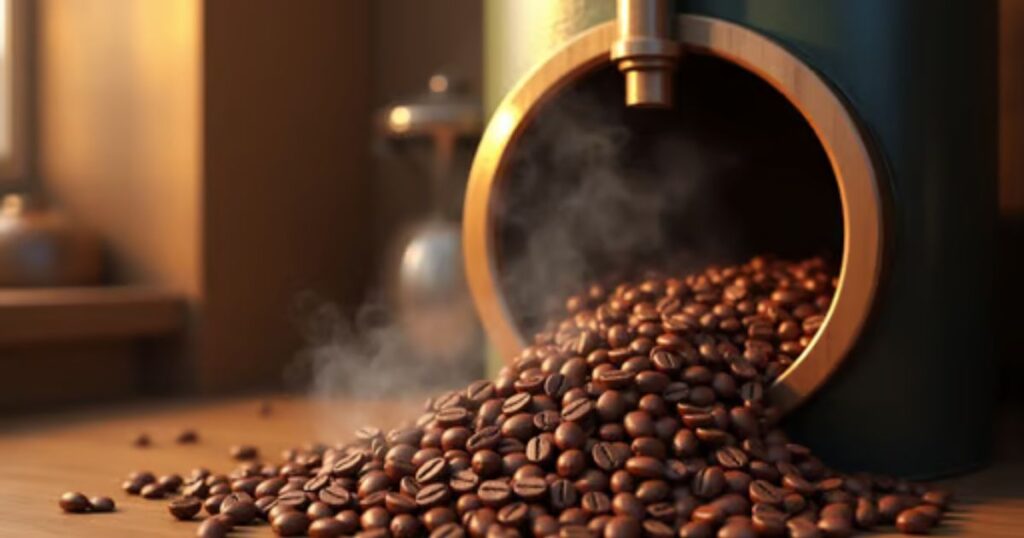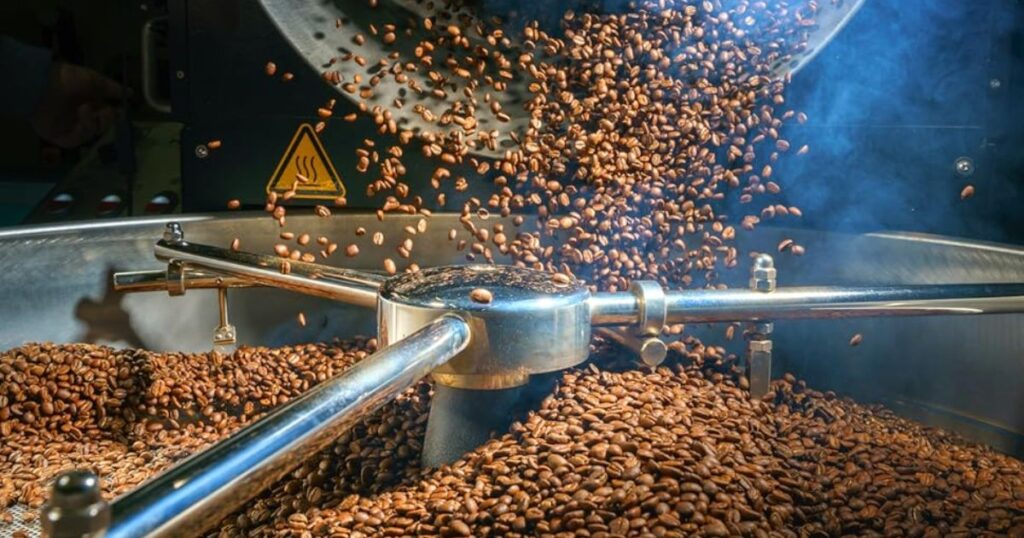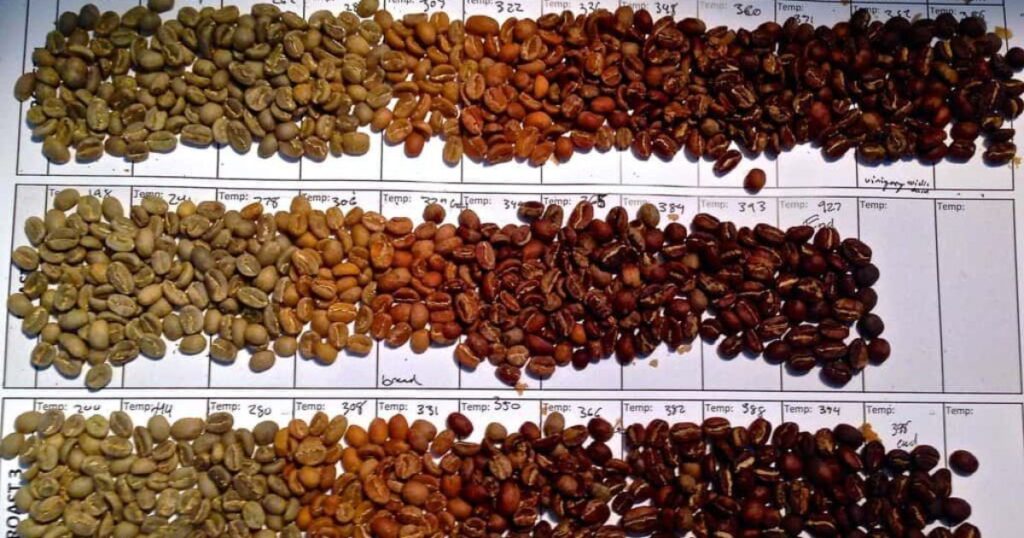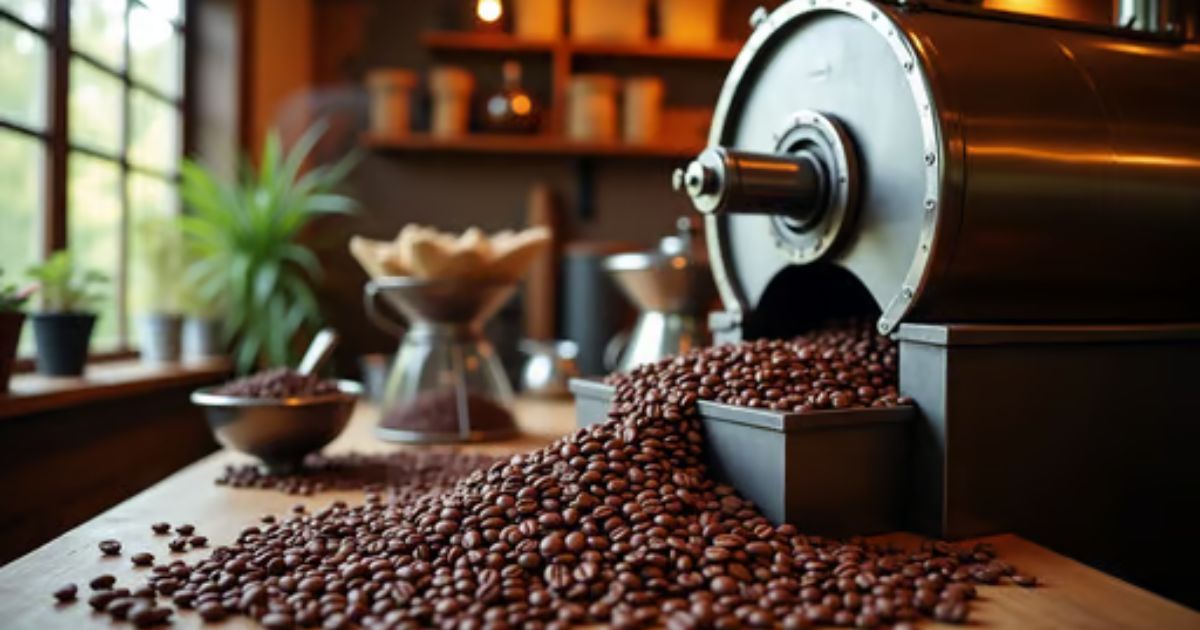How to Roast Coffee Beans Like a Pro: A Beginner’s Ultimate Guide
Have you ever wondered how to roast coffee beans at home without expensive equipment? It’s easier than you think! With less than $40 in basic tools and just a few simple steps, you can turn raw green coffee beans into a fresh, aromatic roast—all from your own kitchen.
The entire coffee roasting process takes under 10 minutes, and the reward is unbeatable: a rich, flavorful cup brewed from beans you roasted yourself. If you prefer light roast, medium roast, or dark roast coffee, home roasting gives you full control over the flavor and freshness of your beans.
Say goodbye to stale store-bought coffee and experience the magic of fresh-roasted coffee every morning. Ready to master the art of how to roast coffee beans? Let’s get started!
A Brief History of Coffee Roasting
Coffee roasting has been around for centuries. It dates back to the 15th century in the Middle East, where beans were roasted in thin metal pans over an open flame. By the 19th century, roasting evolved with the invention of mechanical coffee roasters.

Today, modern coffee roasting methods blend science and art, allowing coffee lovers to create their perfect cup with precision.
In ancient times, roasting coffee was a manual process that required patience and skill. Traditional methods involved using clay or metal pans over an open fire, which resulted in uneven roasting.
Over time, technological advancements led to the development of drum roasters and hot-air roasting techniques, making coffee roasting more efficient and consistent.
Today, coffee roasting is a sophisticated process that combines heat control, airflow, and timing to achieve precise flavors.
The Science Behind Roasting Coffee Beans
What is the science behind how to roast coffee beans? Roasting coffee is more than just applying heat to beans; it’s a chemical transformation. As coffee beans heat up, they undergo a process called the Maillard reaction, which gives them their signature flavors and aromas.

This reaction occurs between amino acids and sugars within the beans, leading to caramelization and the development of complex flavor compounds.
Coffee beans also contain water, and as they heat up, this water evaporates, causing the beans to expand. The characteristic popping sounds, known as first crack and second crack, signal different stages of roasting.
The first crack occurs when internal pressure causes the beans to crack open, marking the transition to a light roast. The second crack, which happens later, indicates deeper caramelization and the development of bold flavors.
How to Roast Coffee Beans: Step-by-Step
Following are the steps you need to follow to perfectly roast the beans:

Choosing Your Beans
Start with high-quality, green coffee beans. Different beans have unique flavor profiles, so experiment to find your favorite type of coffee roasts. Coffee beans from regions like Ethiopia, Colombia, and Brazil each have distinctive taste notes, ranging from fruity and floral to nutty and chocolatey.
Selecting Your Roasting Method
There are several ways to start roasting coffee at home. Each method offers a unique experience and level of control over the roast.
- Stovetop Roasting: Requires a heavy pan and constant stirring to ensure an even roast. This method is affordable but demands attention.
- Oven Roasting: Simple and convenient but requires close monitoring to avoid uneven roasting.
- Popcorn Machine: Surprisingly effective for small batches, as it provides even heat distribution.
- Home Coffee Roaster: The best option for precision and control, allowing for adjustable temperature and airflow settings.
Understanding Roast Levels
Coffee can be roasted to different levels, each offering unique flavor characteristics. Understanding these roast levels will help you craft your perfect cup.
- Light Roast: Retains the bean’s original flavor and has bright acidity. Common in specialty coffee, light roasts highlight fruity and floral notes.
- Medium Roast: A balance between acidity and sweetness, with a fuller body and slightly caramelized flavors.
- Dark Roast: Bold, smoky, and rich, with low acidity and deeper caramelization. Often used in espresso blends.
The Roasting Process
Preheat your roasting equipment before adding the green coffee beans. Stir or rotate them consistently to ensure even roasting. Listen for the “first crack,” a popping sound that indicates a light roast.

Continue roasting for a medium or dark roast, waiting for the second crack if you prefer darker flavors. Remove the beans from heat and let them cool immediately to prevent over-roasting.
Cooling and Storing
Cooling is a crucial step in coffee roasting. Spread the beans on a baking sheet or use a cooling tray to cool them quickly. Storing them properly ensures long-lasting freshness.
Store roasted beans in an airtight container away from direct sunlight, moisture, and heat. Freshly roasted beans release carbon dioxide, so allow them to degas for 12-24 hours before sealing.
The Art of Tasting and Brewing Freshly Roasted Coffee
Now that you have your freshly roasted coffee beans, it’s time to brew the ultimate cup. Grinding them right before brewing preserves their natural oils and aroma. Experiment with different brew methods to explore various methods of how to roast coffee beans gives us an opportunity to try various flavors:

- French Press: Produces a rich, full-bodied coffee with natural oils.
- Espresso: Intense and concentrated, perfect for lattes and cappuccinos.
- Pour-Over: Highlights nuanced flavors and provides a clean, crisp taste.
- AeroPress: Versatile and fast, producing smooth and well-balanced coffee.
You can also enhance your coffee experience by adding a touch of cinnamon, vanilla, or caramel for extra depth of flavor.
Common Mistakes to Avoid When Roasting Coffee Beans
Roasting coffee at home is a learning process, and mistakes are part of the journey of knowing how to roast coffee beans. Here are some common pitfalls to watch out for:

- Uneven Roasting: Stir the beans consistently to achieve an even roast.
- Burning the Beans: Avoid excessive heat; roasting too fast can lead to burnt flavors.
- Underdeveloped Roast: Insufficient roasting time may result in grassy or sour flavors.
- Not Cooling Properly: Failing to cool beans quickly can cause them to continue roasting beyond the desired level.
- Improper Storage: Exposure to air, moisture, or heat can make coffee stale quickly.
Conclusion: Time to Roast Like a Pro!
Roasting coffee beans at home is a rewarding experience. It allows you to control the flavor, freshness, and quality of your coffee. Plus, nothing beats the smell of freshly roasted coffee wafting through your kitchen.
Why settle for store-bought when you know how to roast coffee beans and can start roasting coffee at home? Begin your journey today and experience coffee like never before. Try it out, experiment with different types of coffee roasts, and find your perfect brew.
Are you ready to roast like a pro? Let us know how your first batch turns out!
FAQs
How to Roast Coffee Beans Perfectly?
You can roast beans perfectly by heating the pan before roasting. Then roast the green coffee beans from 5 to 10 minutes.
Can you Roast Coffee Beans in a Regular Oven?
Yes, you can roast coffee beans in a regular oven! Here’s how:
Set your oven to the highest temperature, ideally around 500°F. Place the coffee beans in a perforated pan or a steamer. Place the pan on a cookie sheet and position it on the middle rack of the oven. Open the oven door every minute or two to stir the beans. This helps ensure an even roast.
What is the Cheapest way to Roast Coffee Beans?
The most affordable method for roasting coffee beans is using a skillet. Simply heat the skillet over medium heat and add the green coffee beans, stirring constantly to prevent burning. This method allows for a quick and cost-effective way to achieve a fresh roast at home.
How do you Roast Coffee at Home?
To roast coffee at home, spread a single layer of coffee beans evenly on a baking sheet. Preheat your oven to a high temperature, between 450°F and 500°F. Roast the beans, stirring occasionally, until they reach your preferred darkness.
What is the difference between roast coffee and regular coffee?
Freshly roasted coffee offers a wider range of flavors compared to regular coffee. The roasting process enhances the beans’ natural characteristics, resulting in unique taste profiles. In contrast, regular coffee may lack the complexity and freshness of freshly roasted varieties roasted coffee presents a broader spectrum of flavors


